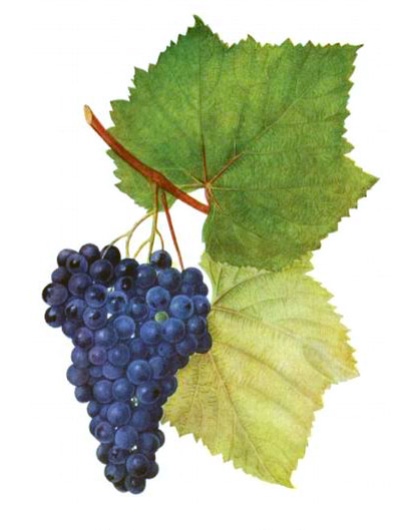
- Authors: Georgia
- Appointment: technical
- Berry color: dark blue, almost black
- With bones: Yes
- Ripening period: late
- Ripening period, days: 176-203
- Name synonyms: Azhkachich, Kajij, Kachichi
- Yield: 80-90 c / ha
- Flower type: bisexual
- Density of the bunch: loose
There are a lot of varieties of fruit crops. But even against the general background, the Kacic grapes deserve the most careful consideration. Its features will be of great interest to most gardeners.
Breeding history
The Kacic grape is a very old variety. It was introduced into economic circulation back in 1939. Selection development was carried out in Georgia. The official synonyms for the name are Azhkachich, Kachichi, Kajij. Kacic is intended for technical cultivation. It is curious that, according to a number of experts, this is one of the most ancient varieties, and in the twentieth century it was simply reconstructed.
Description
Ripening period
The Kacic grape delights people with its fruits quite late. After planting, the berries are finally formed on the 176-203 day. The total amount of active temperatures between the release of the buds and the formation of technically suitable grapes is 3500 degrees. This circumstance makes the variety unsuitable for open cultivation anywhere other than the Black Sea coast. Acclimatization, even in the middle lane, encounters great difficulties.
Bunches
Kacic's brushes are cone-shaped. They are of the paddle type. Fruits in a bunch are concentrated very little, it itself is friable. Cylindrical clusters are sometimes found. Under favorable conditions, they reach an average density.
Berries
The grapes are colored dark blue, almost imperceptibly different from black. They contain bones inside. The peel of the berries is very thin. The pulp is not too juicy and spreads. The size of the grapes: width 4-16 mm, length 15-17 mm.
Taste
In this sense, Kacic does not present any special surprises. Its simple flavor is not overly expressive compared to other varieties. However, it is used mainly for the production of wines, so the taste is not very important.
Yield
There are at least 80 centners (centners) of fruits per 1 hectare. Under favorable conditions, this figure rises to 90 centners. By modern standards, it is a typical medium-yielding grape. However, given the long history, the result is quite good. Fruits are usually harvested in the second half of October.


Growing features
Landing
The plant tolerates high soil moisture relatively well. He is not afraid of a significant amount of precipitation. In this regard, Kacic is better than Riesling or Aligote. Good planting development is possible on any land. The exception is saline and waterlogged areas.
But the best option would be:
medium skeletal red soil;
yellow soil;
hillsides composed of carbonates.
Kacic should be planted as early as possible. Solid sunlight is very important for this culture.It should be protected from cold winds. The feeding measures are typical for technical grape varieties.

Pollination
The culture is distinguished by bisexual flowers. Therefore, special efforts to activate pollination will not be required. The measures to attract bees to the vineyard are the same as usual. In seasons with good weather, in general, there is nothing to worry about.
Pruning
Kacic is distinguished by strong growth. Therefore, it must be normalized. Healing pruning is carried out as needed. Care is simple and affordable for almost every gardener. Of course, precautions are needed to prevent the introduction of infection during pruning.



Frost resistance and the need for shelter
This grape variety is optimally adapted to the south of the Black Sea region. Under these conditions, during an ordinary mild winter, it can survive without shelter. The need for covering works arises if the season is harsher than the climatic average. However, it is impossible to judge the real winter hardiness of the plant in Abkhazia and in the south of the Krasnodar Territory. Outside these localities, it is not zoned.

Diseases and pests
Kacic grapes tolerate the effects of powdery mildew well. Also unlikely to be affected by gray mold. However, this does not obviate the need for preventive treatments. It is imperative to protect yourself from other infections and harmful insects. There is a low likelihood of mildew injury.

If a grape is exposed to any disease or insect, this always affects its appearance.
Storage
The thin skin of the fruit and the relatively mediocre taste severely limit storage possibilities. You can save the harvest of Kacic grapes only in refrigerated chambers. But they practically do not store it. The main direction of use is processing into red wines. They are soft and have a peculiar bouquet.











































































